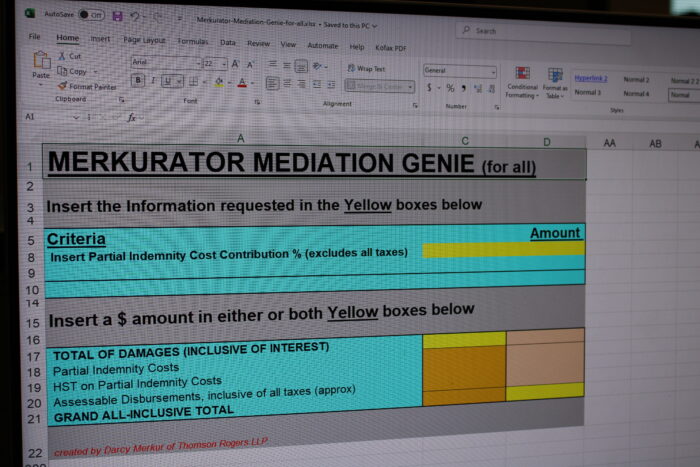Snowmobiles & Trailers
Author(s): Carr Hatch, Leonard H. Kunka
December 1, 2011
As summer comes to a close, and winter only a few months away, recreational enthusiasts’ thoughts turn to winter sports and to snowmobiling.
There is often significant confusion surrounding how snowmobiles are treated for the purpose of insurance claims in the event of a snowmobile accident. Snowmobiles are required to be insured in the same manner as any other motorized vehicle which is used upon a highway. The typical snowmobile insurance policy is therefore the standard automobile policy.
Any claim involving a collision between two snowmobiles, a snowmobile and a pedestrian or a snowmobile and another type of vehicle will be treated in the same fashion as an automobile insurance claim. Statutory Accident Benefits are also available to the drivers and passengers.
If the accident involves a single snowmobile, the driver and passengers on the snowmobile are still entitled to the full compliment of Statutory Accident Benefits, should they be injured.
Ontario moved to a more customized form of automobile/snowmobile insurance in September of 2010. While certain basic coverages were reduced, optional benefits were introduced to allow people to customize insurance coverage to their needs. Owners of snowmobiles should carefully consider whether they should opt for the enhanced insurance benefits which increase the Statutory Accident Benefit limits in the case of non-catastrophic and catastrophic injuries.
Similar to motorcyclists, snowmobile occupants are fully exposed to numerous hazards. Snowmobile trails are lined with trees, as the trails weave in and out of forested areas. Any miscue can lead to sudden contact with a tree or rocks. Many trails continue across bodies of water, which creates numerous risks including breaking through the ice into icy waters below, ejection from the machine as the snowmobile goes over uneven terrain, or contact with an ice “shove”. Trails contain sharp turns, steep slopes and the added complication of icy surfaces. Unfortunately, another risk of snowmobiling involves being on trails with other operators who are often inexperienced drivers, drive too quickly, or drive under the influence of alcohol.
Frequently, injuries arising from snowmobile accidents are serious and often “catastrophic”. Enhanced optional benefits become important to help a person rehabilitate from their injuries. Similarly, the significant level of accident benefits available for catastrophic injuries becomes important when serious snowmobile accidents occur, particularly since many snowmobile accidents are single vehicle collisions.
The other component of claims involving snowmobiles revolves around the use of snowmobile trailers. A significant body of jurisprudence has developed, under Statutory Accident Benefits1 and in tort, revolving around the question of whether insurance coverage extends to cover accidents arising out of the use and operation of a trailer.
The Ontario court decision of Healy v. Blake2, addressed the issue of whether a homeowner’s policy, which excluded coverage for use and operation of a motor vehicle, applied where the Defendant was negligent in the construction and the connection of a trailer to an automobile, and the automobile was subsequently involved in an accident. The court applied the exclusion in the policy, and determined that the negligent construction and connection were considered to be “use and operation of a motor vehicle”, resulting in the Plaintiff being unable to recover under their homeowner’s insurance policy.
In the Ontario Court Appeal decision of Copley v. Kerr Farms Ltd.3, a tomato hauler (farm employee) was injured while he was attempting to connect his tomato wagon, (which was a flat-bed trailer), to the back of his truck. If the Court determined that the wagon was an automobile, the Plaintiff would have been unable to recover for his personal injuries against the Defendant farm owner based on s. 267.1(1) of the Insurance Act4. The Court determined that the act of connecting a flat-bed tomato trailer to the truck constituted “use or operation of a motor vehicle”, but the court also found that the tomato trailer was not an “automobile”, as it had not yet been attached to the truck, nor was it under the “power and control” of the truck, and was therefore not a “trailer of a motor vehicle” as stated in the Compulsory Automobile Insurance Act5.
In Gramak Ltd. v. State Farm Mutual Insurance Co.6, when assessing insurance coverage, the court extended “use” to include the act of negligently drilling a hole through a car trunk to attach a travel trailer. The court stated: “The basic function of a motor vehicle is to carry people and personal property from place to place. And certainly the hauling of trailers as a means of carrying on this function is a common use of motor cars and in order to use trailers for this purpose it is necessary to make mechanical adjustments for the hook-up or wiring from car to trailer.”7
Our courts have taken a generally broad approach8 when defining the scope of what amounts to use and operation, when trailers are involved. Considering how our courts have treated the “use and operation” with respect to the connection or attempted connection of a trailer to an automobile, it is vital for recreational enthusiasts and those planning on using trailers this upcoming winter to be informed of the coverage limitations and exclusions within their motor vehicle and homeowner’s insurance policies. The more customized form of insurance now available since the 2010 automobile insurance amendments, combined with the typical risks associated with towing trailers and recreational vehicles should lead owners and users to consider more expansive coverage; regardless of whether they are the avid snowmobiler, or the farmer pulling a tomato wagon.
1 See https://trlaw.com/accident-benefit-reporter-volume-12-issue-1#automobile
2 [2000] O.J. No. 1475.
3 [2002] O.J. No. 1644.
4 R.S.O. 1990, c. I.8.
5 R.S.O. 1990, c. 25.
6 [1975] O.J. No. 2513.
7 Ibid. at para. 17.
8 Supra note 2 at para 12.
Share this






